
Introduction: The rise of the social enterprise 2018 Global Human Capital Trends
11 minute read
29 March 2018
Organizations are no longer judged only for their financial performance, or even the quality of their products or services. Rather, they are being evaluated on the basis of their impact on society at large—transforming them from business enterprises into social enterprises.

The growing importance of social capital
Learn more
View 2018 Global Human Capital Trends
Explore the infographic
Watch the video
Read the press release
Download the full report or create a custom PDF
The 2018 Deloitte Global Human Capital Trends report showcases a profound shift facing business leaders worldwide: The rapid rise of what we call the social enterprise. This shift reflects the growing importance of social capital in shaping an organization’s purpose, guiding its relationships with stakeholders, and influencing its ultimate success or failure.
In 2018, we are witnessing seismic changes in the workforce, the workplace, and the technologies used in the world of work. Based on this year’s global survey of more than 11,000 business and HR leaders, as well as interviews with executives from some of today’s leading organizations, we believe that a fundamental change is underway. Organizations are no longer assessed based only on traditional metrics such as financial performance, or even the quality of their products or services. Rather, organizations today are increasingly judged on the basis of their relationships with their workers, their customers, and their communities, as well as their impact on society at large—transforming them from business enterprises into social enterprises.
In many ways, social capital is achieving a newfound status next to financial and physical capital in value. In a recent survey, for instance, 65 percent of CEOs rated “inclusive growth” as a top-three strategic concern, more than three times greater than the proportion citing “shareholder value.”1 Today, successful businesses must incorporate external trends, perspectives, and voices by maintaining positive relationships, not just with customers and employees, but also with local communities, regulators, and a variety of other stakeholders. Building these relationships challenges business leaders to listen closely to constituents, act transparently with information, break down silos to enhance collaboration, and build trust, credibility, and consistency through their actions. This is not a matter of altruism: Doing so is critical to maintaining an organization’s reputation; to attracting, retaining, and engaging critical workers; and to cultivating loyalty among customers.
What is a social enterprise?A social enterprise is an organization whose mission combines revenue growth and profit-making with the need to respect and support its environment and stakeholder network. This includes listening to, investing in, and actively managing the trends that are shaping today’s world. It is an organization that shoulders its responsibility to be a good citizen (both inside and outside the organization), serving as a role model for its peers and promoting a high degree of collaboration at every level of the organization. |
In past Global Human Capital Trends reports, we have noted the movement of many organizations toward a “network of teams” operating model that aims to enable greater collaboration and internal agility.2 Now, this movement has been joined by the growing shift from an internal, enterprise focus to an external, ecosystem one (figure 1). Organizations on the leading edge of both of these changes embody our concept of the social enterprise: an organization that is alert enough to sense, and responsive enough to accommodate, the gamut of stakeholder expectations and demands.
The last decade: Building toward today’s tipping point
Why has this shift occurred? We believe that it is driven by social, economic, and political changes that have grown since the global financial crisis. Despite the economic recovery the world has seen since 2008, many people feel frustrated that financial gains have failed to improve individuals’ lives, address social problems, support political stability, or mitigate technology’s unintended consequences. People today have less trust in their political and social institutions than they have in years; many expect business leaders to fill the gap.
This point was made this year by BlackRock chief executive Laurence Fink. In his annual letter to CEOs, Fink noted that people are increasingly “turning to the private sector and asking that companies respond to broader societal challenges” and demanding that organizations “serve a social purpose.”3 Fink stated that shareholders, including BlackRock itself, are now evaluating companies based on this standard. A New York Times report suggested that the letter could be a “watershed moment on Wall Street” that raises questions about “the very nature of capitalism.”4
Among the many factors contributing to the rise of the social enterprise, we see three powerful macro forces driving the urgency of this change.
First, the power of the individual is growing, with millennials at the forefront. For the first time in mature markets, young people believe that their lives will be worse than their parents’—and they are actively questioning the core premises of corporate behavior and the economic and social principles that guide it.5 Among this group, social capital plays an outsized role in where they work and what they buy, and 86 percent of millennials think that business success should be measured in terms of more than just financial performance.6 Millennials comprise a majority of the workforce in many countries, and their power will likely grow over time.
This shift in power to the individual is being propelled by today’s hyper-connected world, which enables people to track information about companies and their products, express their opinions to a wide audience, and sign onto social movements, globally and in real time. Back in 2015, we called this trend toward greater transparency “the naked organization”;7 in 2018, the individuals know and expect even more from companies than they did three short years ago.
Second, businesses are being expected to fill a widening leadership vacuum in society. Across the globe, people trust business more than government. The 2018 Edelman Trust Barometer reported that people worldwide place 52 percent trust in business “to do what is right,” versus just 43 percent in government.8 In the United States, in particular, trust in government has hit a four-year low, at just 33 percent.9 There is a widespread perception that political systems are growing more and more polarized and less and less effective at meeting social challenges. Citizens are looking to business to fill the void on critical issues such as income inequality, health care, diversity, and cybersecurity to help make the world more equal and fair.
This expectation is placing immense pressure on companies, but it is also creating opportunities. Organizations that engage with people and demonstrate that they are worthy of trust are burnishing their reputation, winning allies, and influencing or supplanting traditional public policy mechanisms. CEOs such as Amazon’s Jeff Bezos and Salesforce’s Marc Benioff have an unprecedented ability to activate their companies for the good of society.10 Consider the organization jointly created by Amazon, Berkshire Hathaway, and JP Morgan Chase to lower health care costs for employees—tackling an issue that government cannot solve on its own, while also promising to deliver business benefits.11 On the other hand, companies that appear aloof, tone-deaf, or disengaged face harsh headlines, negative attention on social media, and tough questions from a range of stakeholders.
Third, technological change is having unforeseen impacts on society even as it creates massive opportunities to achieve sustainable, inclusive growth. Advances in artificial intelligence (AI) and new communications technologies are fundamentally changing how work gets done, who does it, and how it influences society.12 For instance, machine learning was not in the mainstream three years ago. Today, it is simultaneously one of IT’s hottest areas—and a source of tremendous anxiety about potential job losses. People increasingly realize that rapid technological change, while holding out the promise of valuable opportunities, also creates unforeseen impacts that can undermine social cohesion. Many stakeholders are alarmed, and they expect businesses to channel this force for the broader good.
The good news is that technological advances can open up new opportunities for businesses to have a positive impact on society. Reflecting this view, 87 percent of C-level executives say that Industry 4.0—the industrial revolution brought about by the combination of digital and physical technologies—will lead to more equality and stability, and 74 percent say business will have more influence than governments or other organizations to shape this future.13
Becoming a social enterprise
Foundational to behaving as a social enterprise is to listen carefully to the external as well as the internal environment—not just business partners and customers, but all parties in society that an organization influences and is influenced by. In today’s world, the listening opportunity is greater than ever if organizations truly take advantage of the people data they have at their fingertips. The increasingly hyper-connected nature of the workplace means that interactions between and among workers and the outside world can be a tremendous source for analysis if managed appropriately. Leaders need to take a proactive approach to managing this wealth of information and leveraging it to keep an eye on the trends both inside and outside of the workplace.
Being a social enterprise also means investing in the broader social ecosystem, starting with an organization’s own employees. It means treating all workers—on- and off-balance-sheet—in a fair, transparent, and unbiased way. Leaders should seek to provide a work environment that promotes longevity and well-being, not only in an individual’s career, but also in the physical, mental, and financial spheres. By doing this, an organization invests both in its own workforce and in the workforce ecosystem as a whole, which benefits both the organization and society at large.
Finally, a social enterprise seeks to actively manage its position in the social ecosystem by engaging with stakeholders and strategically determining and pursuing the kind of relationship it wants to maintain with each. This cannot be done in a siloed way. Hence, this year we have provided a set of actions that C-suite leaders can take related to each trend. Each area of focus requires strong collaboration amongst leaders both across the organization and outside of it. Leaders should form relationships with the governments and regulatory bodies that shape the “rules of the road,” work collaboratively with them to create and sustain a fair, just, and equitable marketplace, and partner with communities and educational institutions to help sustain a steady flow of talent with the right skills for the organization—and the broader economy—to thrive.
2018’s 10 human capital trends: Importance and respondent readiness
Respondents generally agree that, while each of the following trends is important, most organizations are not yet ready to meet expectations.
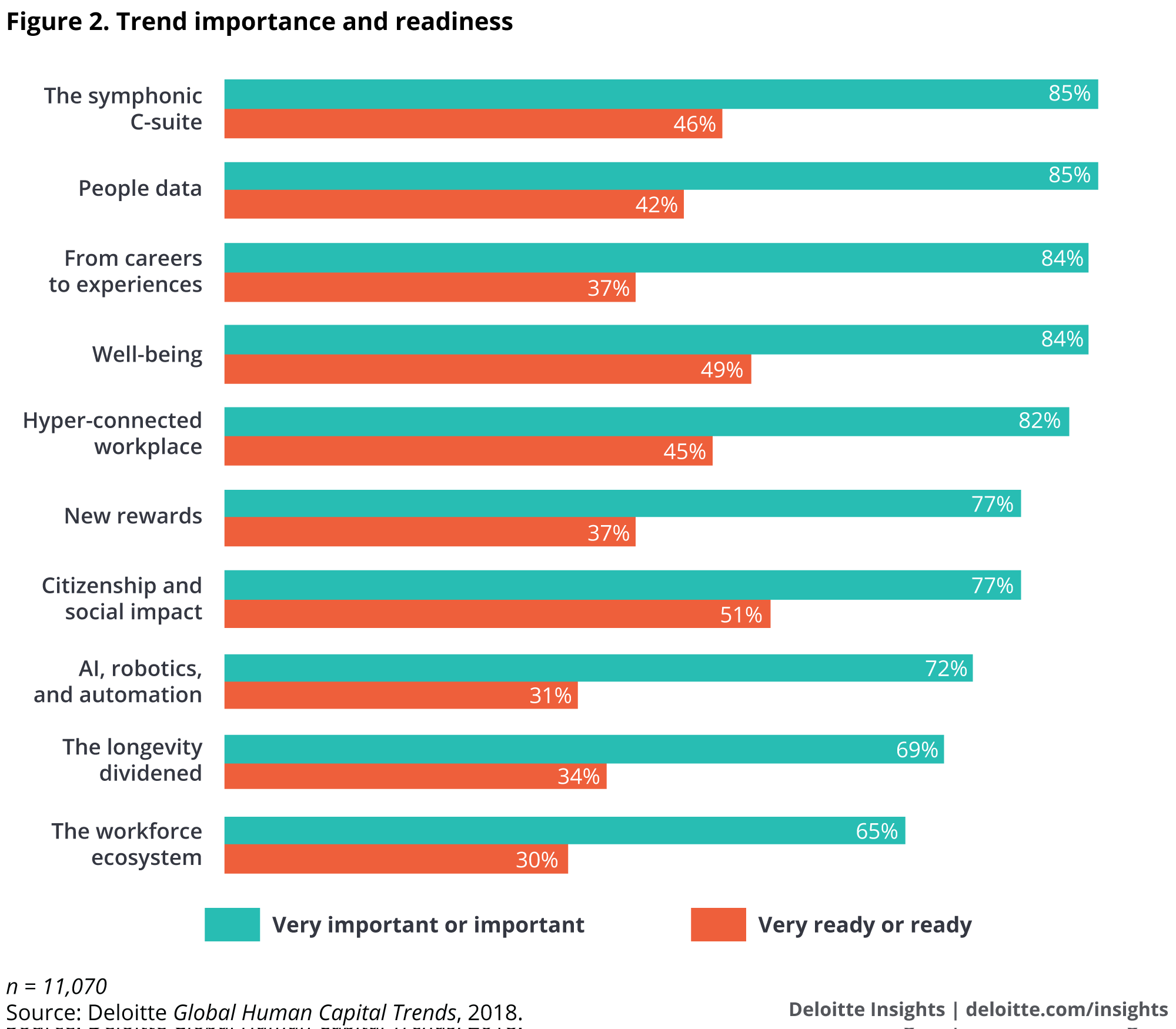
Explore the data further in the Global Human Capital Trends app.
2018’s 10 human capital trends
The 10 human capital trends we explore in this year’s report come together to create an integrated view of the social enterprise.
From the top: The symphonic C-suite
Trend 1. The symphonic C-suite: Teams leading teams
Behaving as a social enterprise and managing the external environment’s macro trends effectively demands an unprecedented level of cross-functional vision, connectivity, and collaboration from C-suite leaders. To do this, they must behave as what we call the “symphonic C-suite,” in which an organization’s top executives play together as a team while also leading their own functional teams, all in harmony. This approach enables the C-suite to understand the many impacts that external forces have on and within the organization—not just on single functions—and plot coordinated, agile responses.
The symphonic C-suite is the next stage in the ongoing evolution of leadership models. This new model is necessary to help leaders to understand, manage, and respond to the complex social capital issues that organizations face, enabling them to tap opportunities, manage risks, and build relationships with internal and external stakeholders. What’s more, the symphonic leadership model is vital for growth: Our survey finds that respondents who indicate their C-suite executives “regularly collaborate on long-term interdependent work” are a third more likely to expect their companies to grow at 10 percent or more during the next year than respondents whose CxOs operate independently.
The C-suite must lead an organization’s response to the other nine trends highlighted in this report. The pace and complexity of the changes involved, and the high stakes of success or failure, elevate these as C-level issues, which cannot be delegated or approached in silos. Only a symphonic C-suite team is sufficient for the scale and speed of the following nine trends. In our chapter on the symphonic C-suite, we call out specific actions executives can take to drive greater collaboration.
The power of the individual
As the power of the individual grows, organizations are revamping their approaches to workforce management, rewards systems, and career models to better listen and respond. In particular, as workers and networks outside the organization grow in importance, companies are striving to build effective ongoing relationships with every segment of the workforce ecosystem. In this year’s report, we have included actions for the individual worker to consider in influencing and managing their personalization and career experiences. The challenge is to figure out how to appropriately address each individual’s preferences and priorities while engaging with a more diverse set of workers and workforce segments than ever before.
Trend 2. The workforce ecosystem: Managing beyond the enterprise
Business leaders and chief human resources officers (CHROs) recognize the need to actively and strategically manage relationships with workforce segments beyond the enterprise, which increasingly affect how an organization delivers services and interacts with customers. When asked to forecast the makeup of their workforce in 2020, 37 percent of survey respondents expected a rise in contractors, 33 percent foresaw an increase in freelancers, and 28 percent expected growth in gig workers. Organizations are finding ways to align their culture and management practices with these external talent segments—engaging the workforce ecosystem for mutual benefit.
Trend 3. New rewards: Personalized, agile, and holistic
Leveraging their power as individuals, employees are asking for more personalized, agile, and holistic rewards, including a focus on fair and open pay. While companies recognize this overall shift, only 8 percent report that their rewards program is “very effective” at creating a personalized, flexible solution. Early experiments are exploring how to develop a holistic variety of rewards and match them to individual preferences, across diverse talent segments and on a continuous basis.
Trend 4. From careers to experiences: New pathways
In a 21st-century career, the individual and his or her experiences take center stage. Instead of a steady progression along a job-based pathway, leading organizations are shifting toward a model that empowers individuals to acquire valuable experiences, explore new roles, and continually reinvent themselves. However, 59 percent of our survey respondents rate their organizations as not effective or only somewhat effective at empowering people to manage their own careers. Improvement in this area is essential to attract critical talent, especially as technology shifts the skills landscape.
Filling society’s leadership vacuum
Leading companies are developing strategies that address societal concerns such as longevity and well-being—and doing so in ways that help improve productivity and performance. Those in this vanguard are finding rich opportunities to build social capital and become a leading voice on key societal issues.
Trend 5. The longevity dividend: Work in an era of 100-year lives
Forward-looking organizations see extended longevity and population aging as an opportunity. Twenty percent of this year’s survey respondents said that they are partnering with older workers to develop new career models. This longevity dividend enables companies to both address a pressing societal issue and tap into a proven, committed, and diverse set of workers. However, doing this requires innovative practices and policies to support extended careers, as well as collaboration between business leaders and workers, to tackle shared challenges such as age bias and pension shortfalls.
Trend 6. Citizenship and social impact: Society holds the mirror
An organization’s track record of corporate citizenship and social impact now has a direct bearing on its core identity and strategy. Engagement with other stakeholders on topics such as diversity, gender pay equity, income inequality, immigration, and climate change can lift financial performance and brand value, while failure to engage can destroy reputation and alienate key audiences. Many organizations are still catching up: 77 percent of our respondents say that citizenship is important, but only 18 percent say this issue is a top priority reflected in corporate strategy.
Trend 7. Well-being: A strategy and a responsibility
As the line between work and life blurs further, employees are demanding that organizations expand their benefits offerings to include a wide range of programs for physical, mental, financial, and spiritual health. In response, employers are investing in well-being programs as both a societal responsibility and a talent strategy. More than 50 percent of survey respondents view a variety of such programs as “valuable” or “highly valuable” to employees, but big gaps remain between what employees value and what companies are delivering.
Leveraging technology for sustainable growth
Organizations are looking to capitalize on the benefits of a surge of new AI-based software, robotics, workplace connectivity tools, and people data applications, while also mitigating potential downsides and unforeseen effects. These tools and investments can help to redesign work architecture, lift productivity, and enhance people efforts, but organizations must also pay attention to and respect their impacts on the workforce as a whole.
Trend 8. AI, robotics, and automation: Put humans in the loop
The influx of AI, robotics, and automation into the workplace has dramatically accelerated in the last year, transforming in-demand roles and skills inside and outside organizations. Perhaps surprisingly, those roles and skills focus on the “uniquely human” rather than the purely technical: Survey respondents predict tremendous future demand for skills such as complex problem-solving (63 percent), cognitive abilities (55 percent), and social skills (52 percent). To be able to maximize the potential value of these technologies today and minimize the potential adverse impacts on the workforce tomorrow, organizations must put humans in the loop—reconstructing work, retraining people, and rearranging the organization. The greatest opportunity is not just to redesign jobs or automate routine work, but to fundamentally rethink “work architecture” to benefit organizations, teams, and individuals.
Trend 9. The hyper-connected workplace: Will productivity reign?
New communications tools are rapidly entering the workplace. Seventy percent of respondents believe workers will spend more time on collaboration platforms in the future, 67 percent see growth in “work-based social media,” and 62 percent predict an increase in instant messaging. But as these tools migrate from personal life to the workplace, organizations must apply their expertise in team management, goal-setting, and employee development to ensure that they actually improve organizational, team, and individual performance and promote the necessary collaboration to truly become a social enterprise. Like the outside world, organizations are becoming hyper-connected; can they also become hyper-productive?
Trend 10. People data: How far is too far?
The rapid increase in data availability and the advent of powerful people analytics tools have generated rich opportunities for HR and organizations—but they are now also generating a variety of potential risks. While more than half of our survey respondents are actively managing the risk of employee perceptions of personal data use, and a similar proportion is managing the risk of legal liability, only a quarter are managing the impact on their consumer brand. Organizations face a tipping point: Develop a set of well-defined policies, security safeguards, transparency measures, and ongoing communication around the use of people data, or risk employee, customer, and societal backlash.
A call to action
The 2018 Global Human Capital Trends report sounds a wake-up call for organizations. The rise of the social enterprise requires a determined focus on building social capital by engaging with diverse stakeholders, accounting for external trends, creating a sense of mission and purpose throughout the organization, and devising strategies that manage new societal expectations. At stake is nothing less than an organization’s reputation, relationships, and, ultimately, success or failure.
In this new era, human capital is inextricably tied to social capital. This reality demands a fundamental pivot in how organizations do business today—and how they prepare for the human capital challenges of the future.
Appendix A: Trend importance by region, industry, and organization size
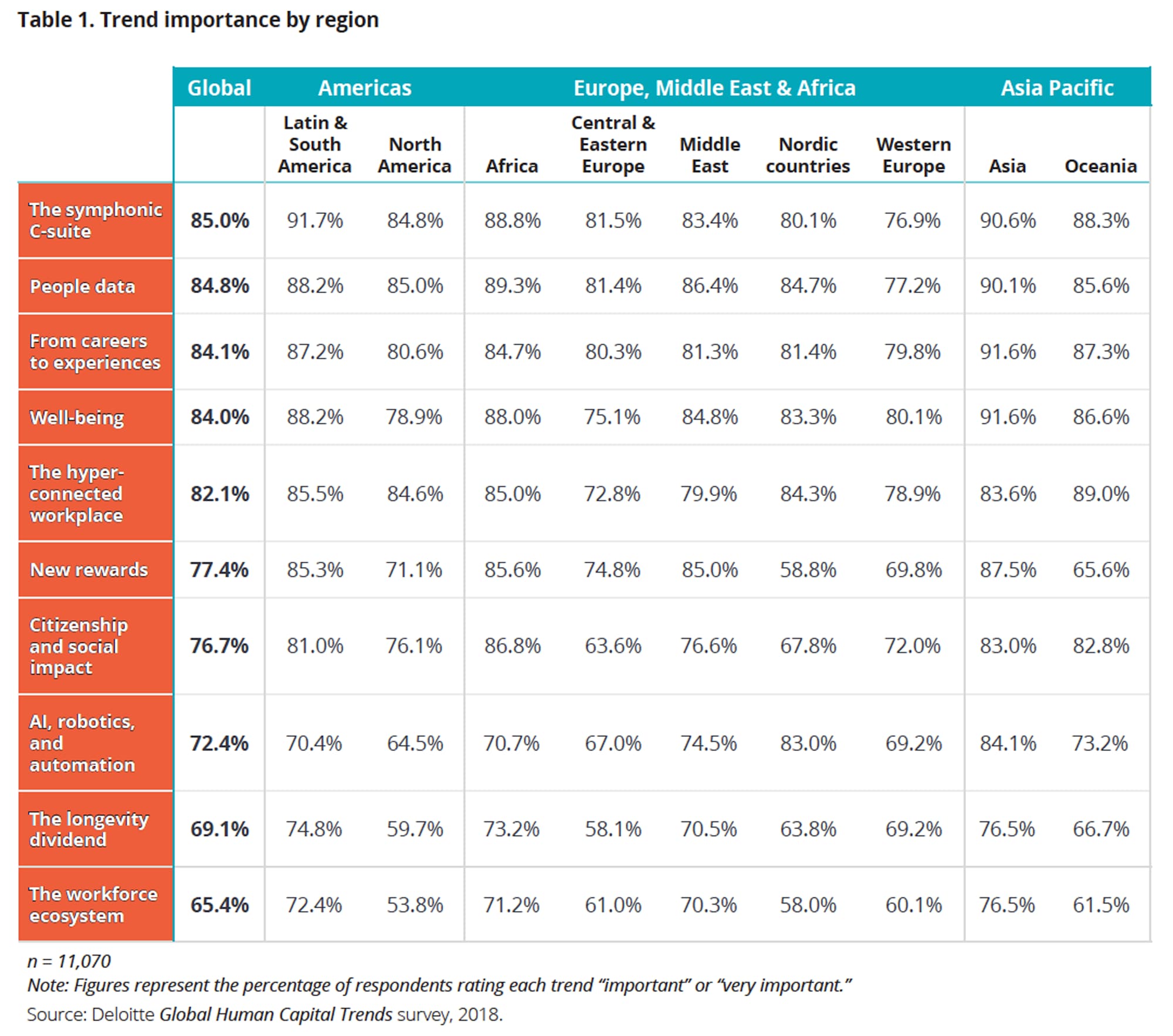
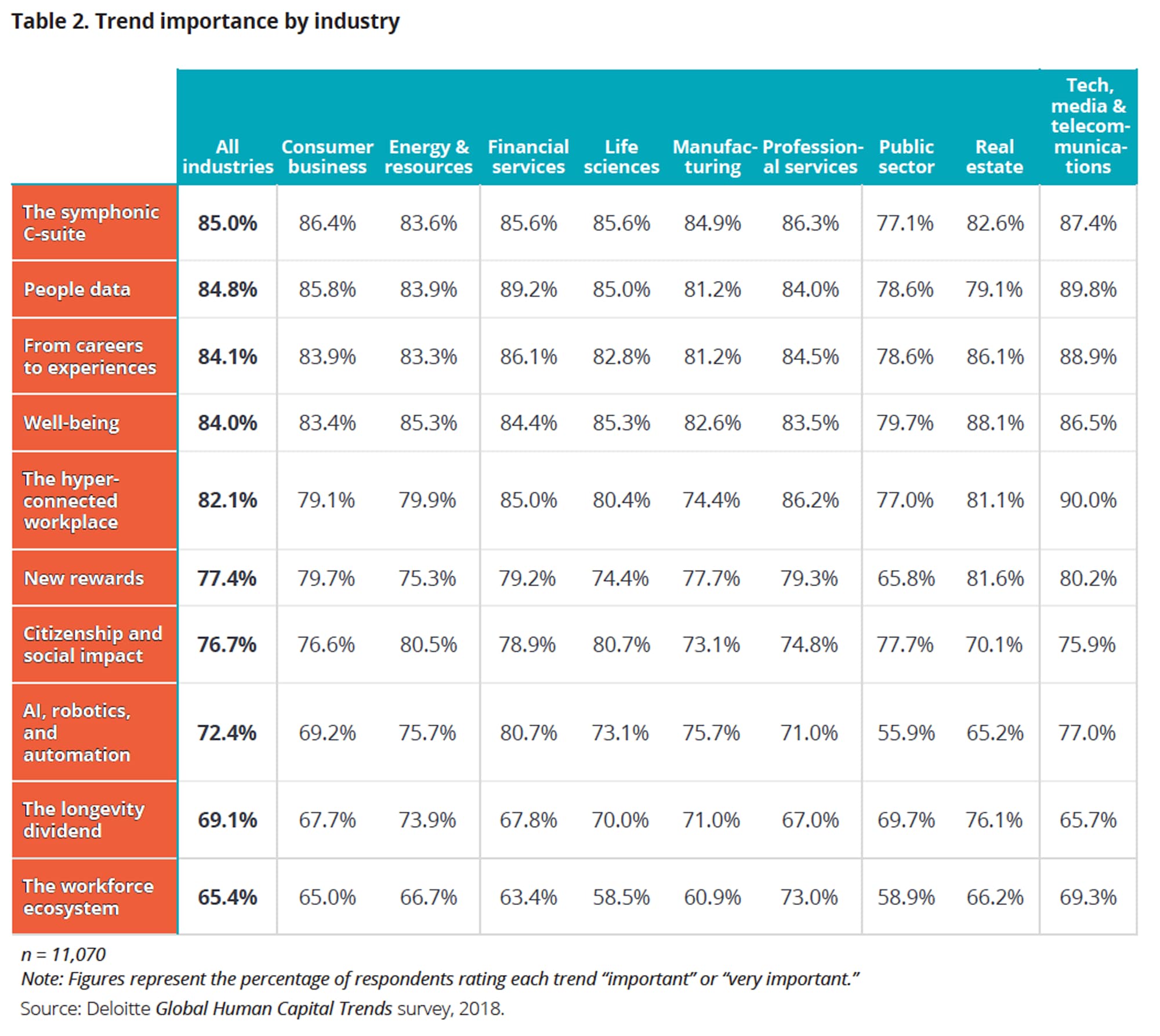
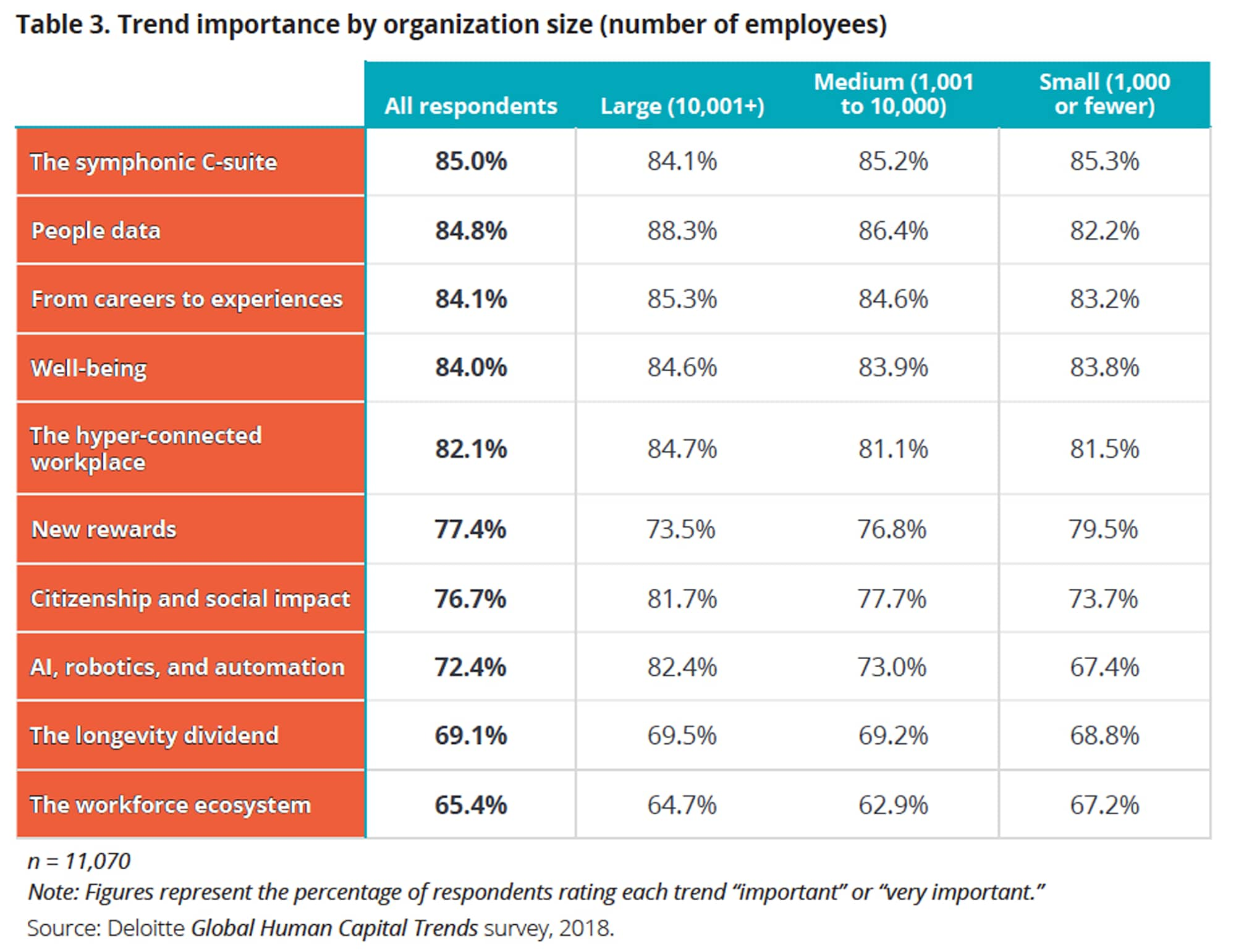
Appendix B: Survey demographics
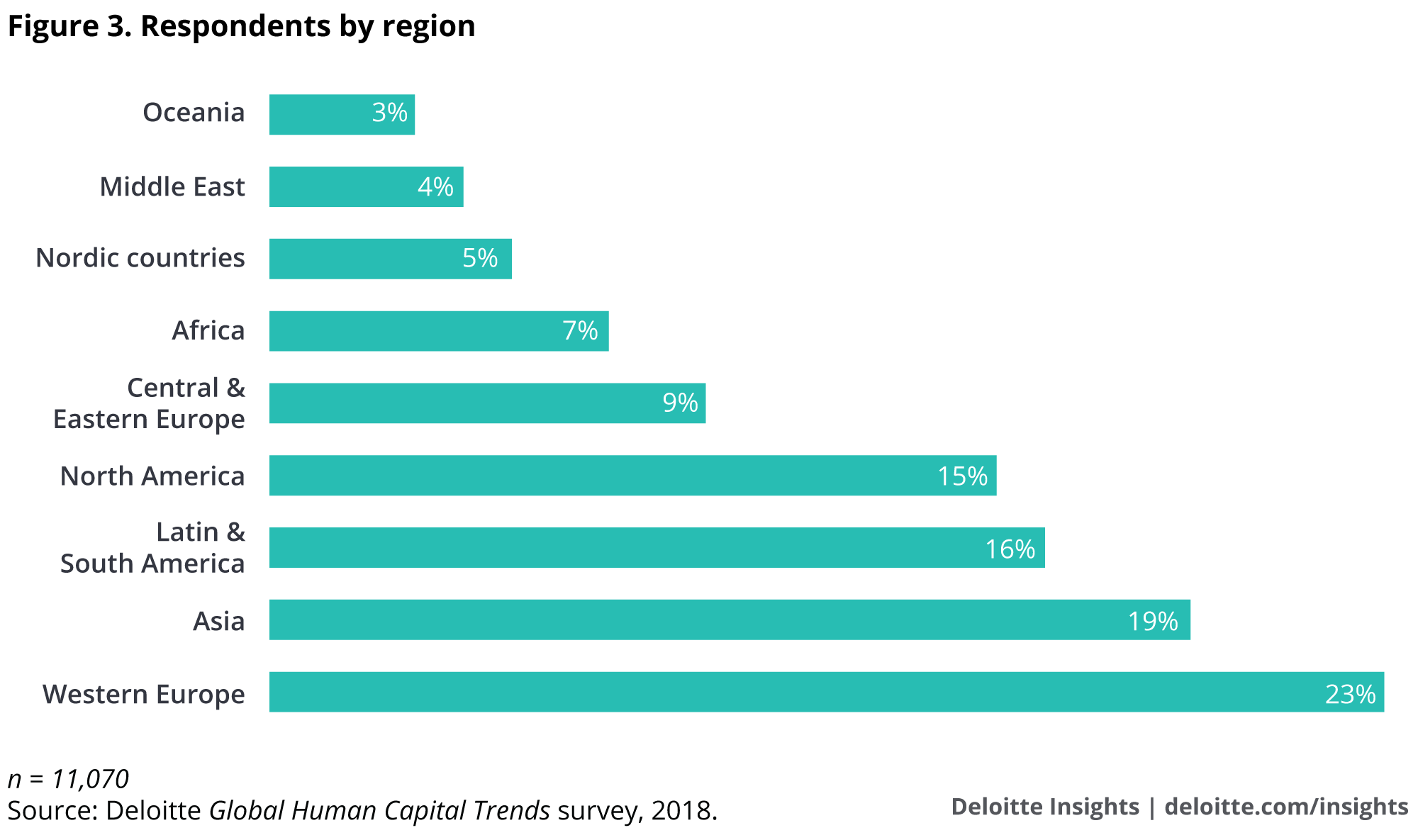
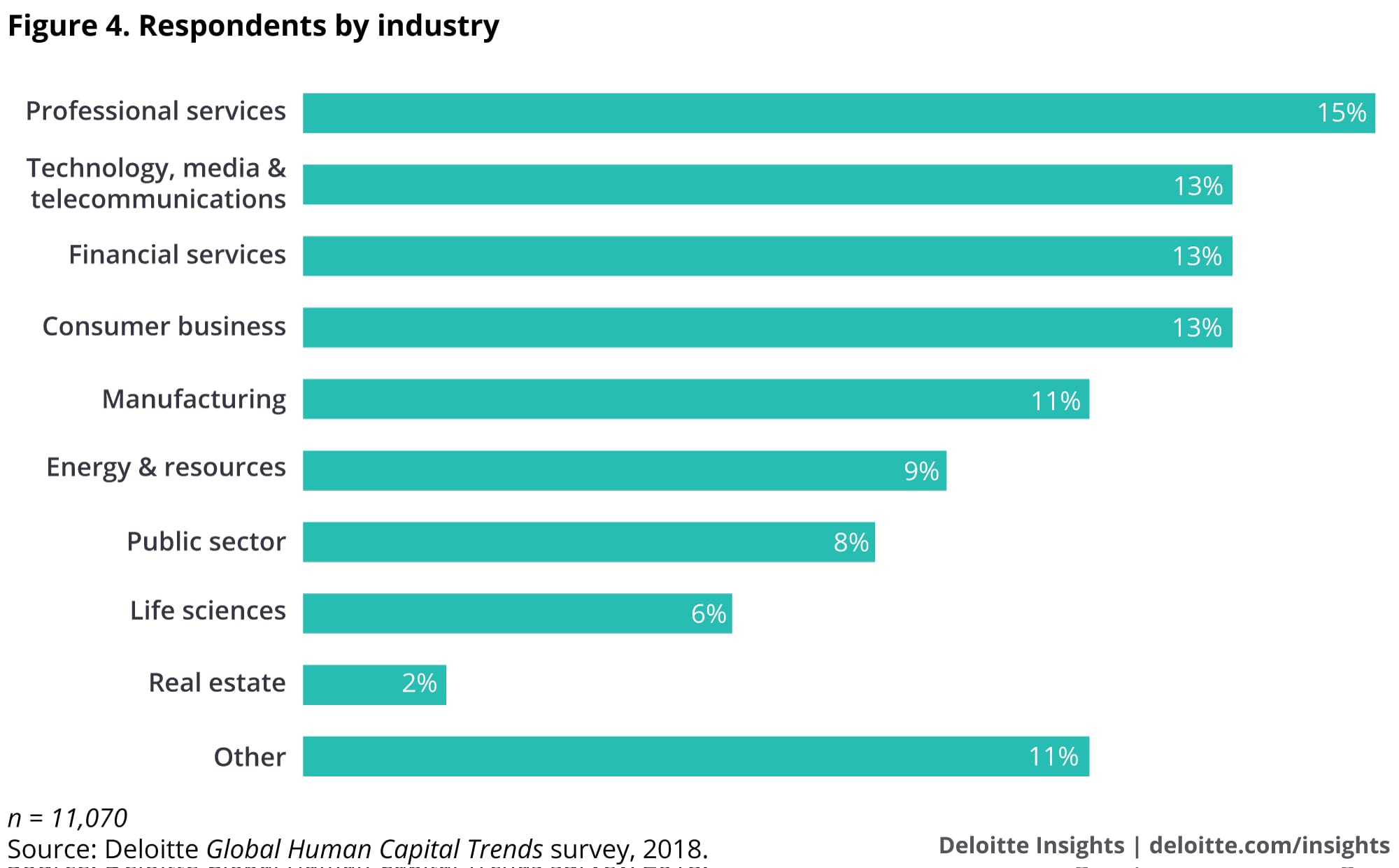
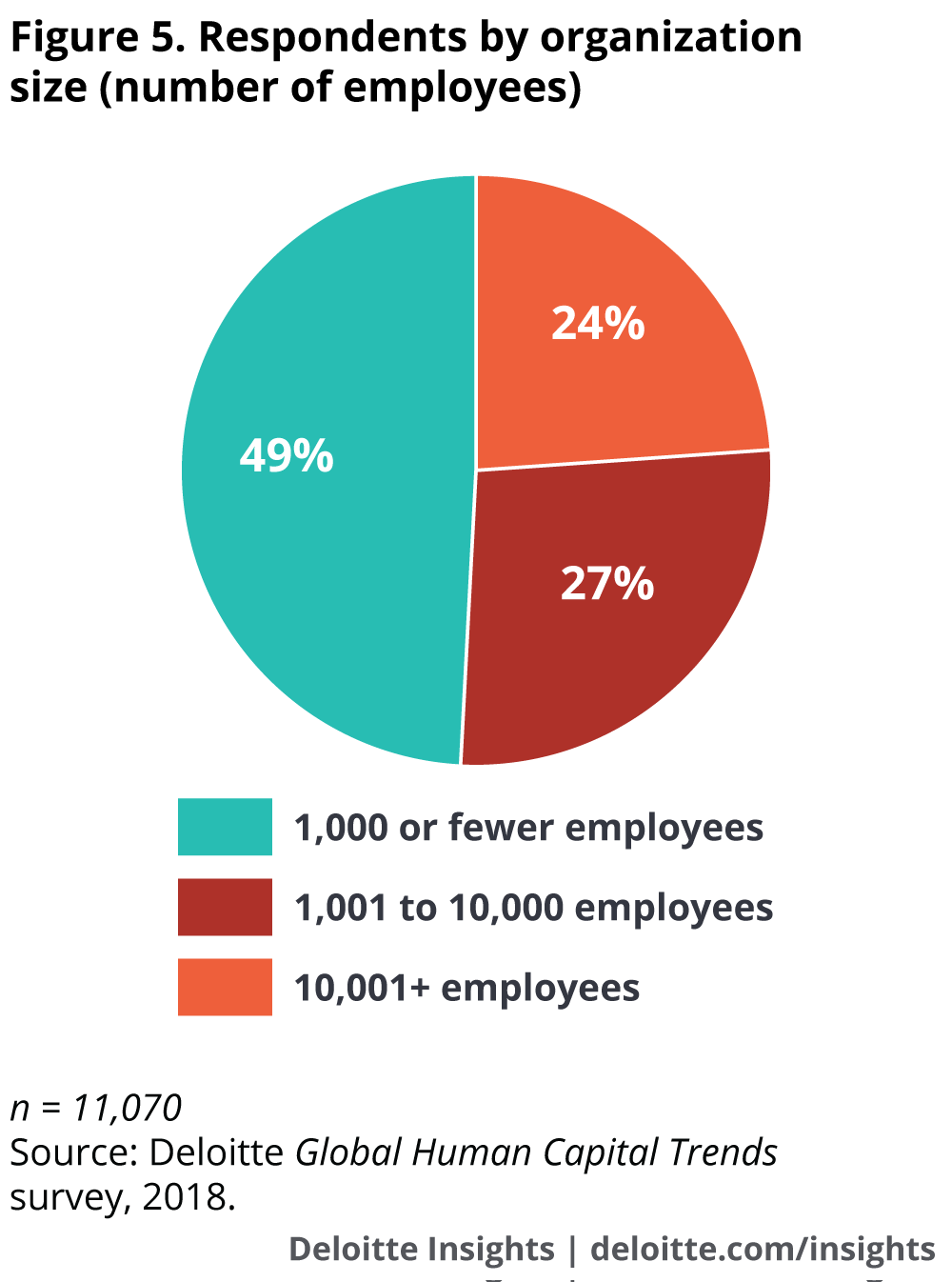
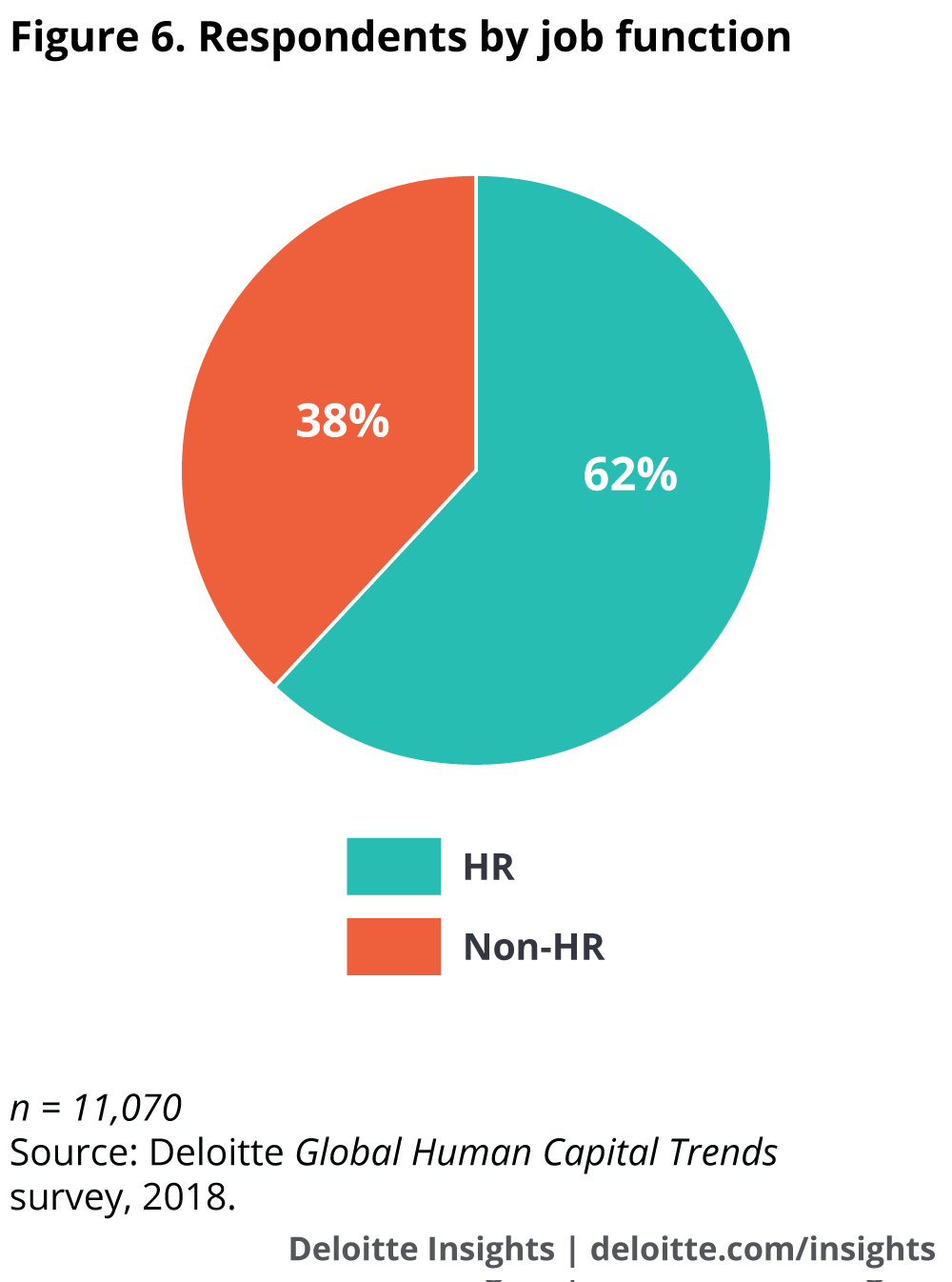
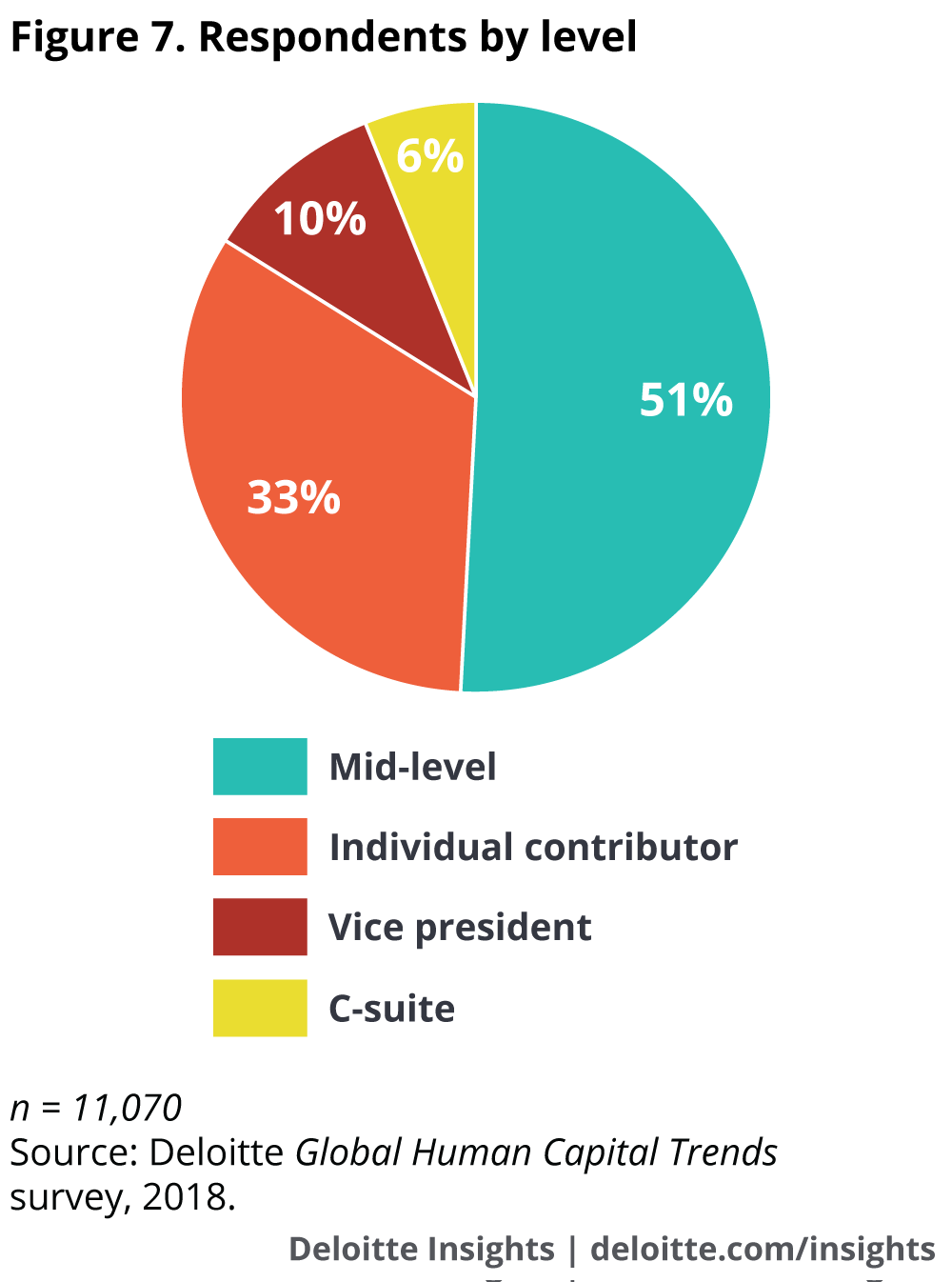
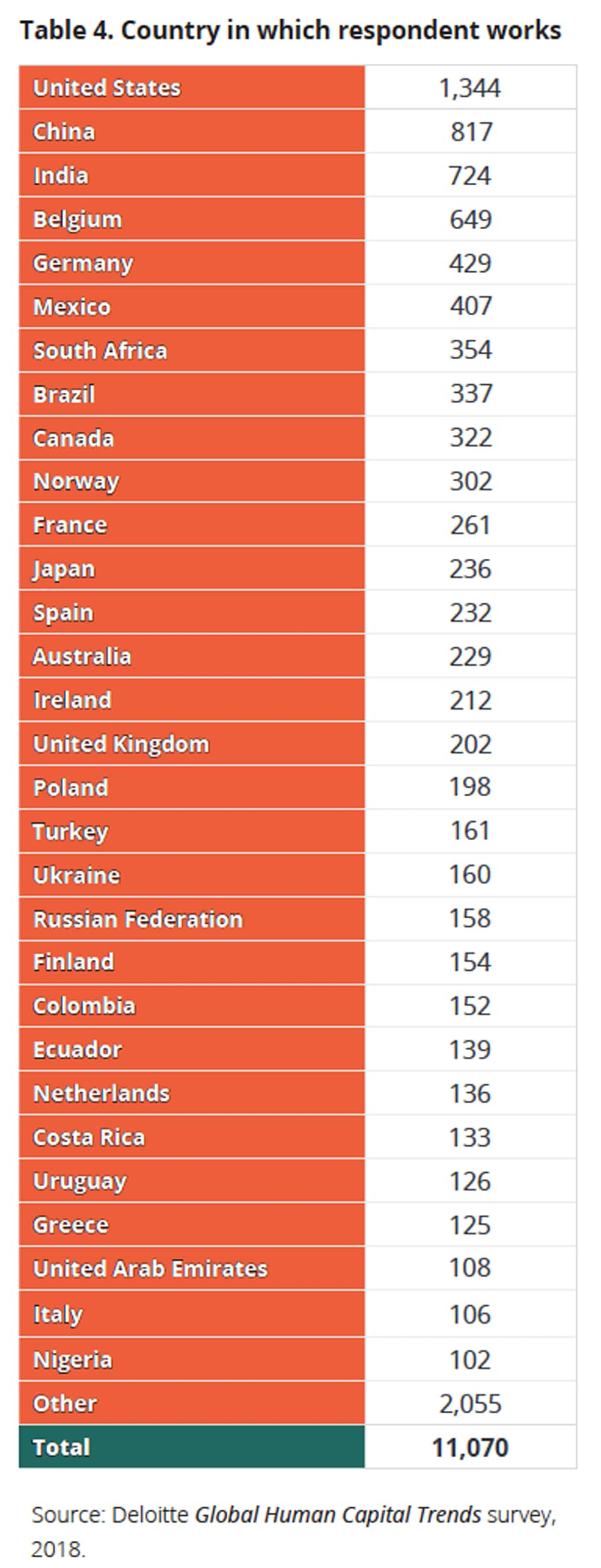
-
The employee experience Article7 years ago
-
Careers and learning Article7 years ago
-
Diversity and inclusion Article7 years ago









